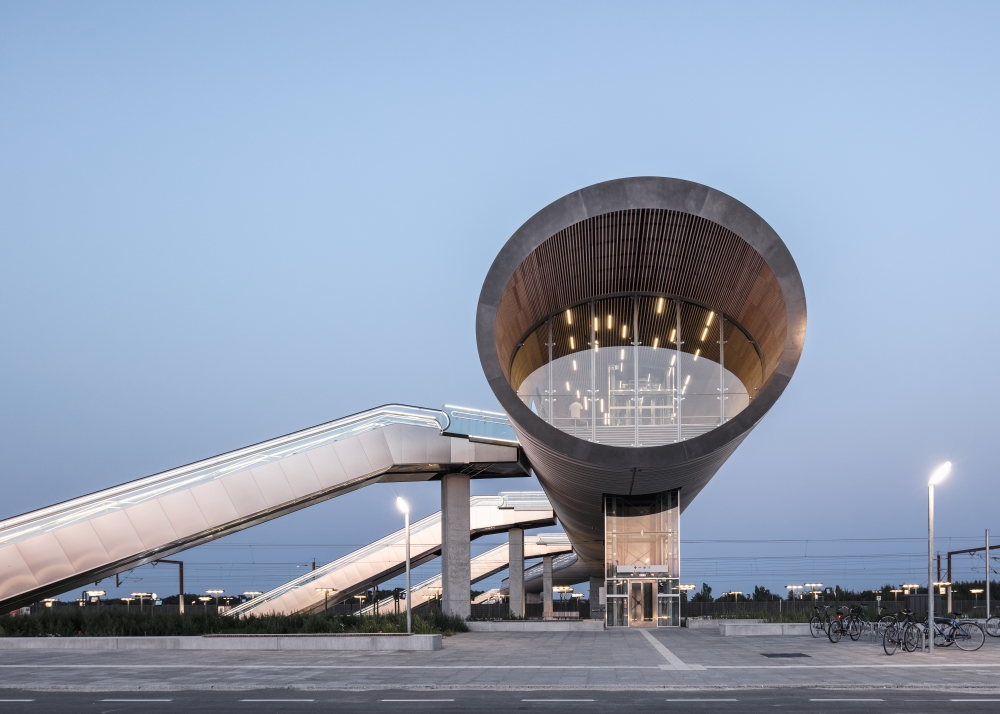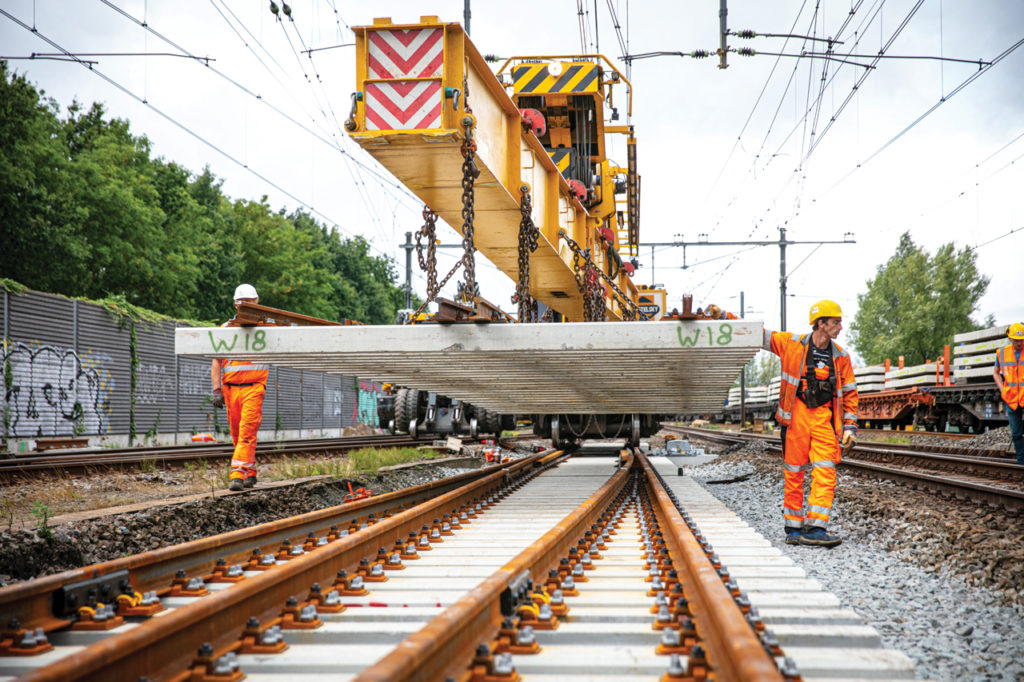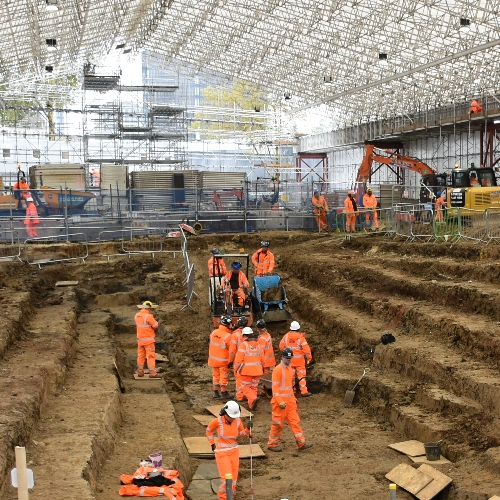Infrastructure and Stations
Stations Infrastructures Asset Management ResilienceStations

Objective
In Europe, some Infrastructure Managers (IM) own or operate stations. In some cases the operational part of the station management is delegated to another entity, which could also be a railway undertaking. As station manager, IMs have a crucial interest in sharing knowledge and experiences with European peers on topics such as station management, development and operations as well as critical and strategic issues (e.g. security, digitalisation and multimodality).
EIM in action
- EIM’s Stations Working Group shares information and best practice related to stations. The WG focuses on the status and application of standards for stations and on the division of responsibilities regarding platforms;
- EIM monitors the relevant legislation affecting stations (e.g. safety, PRM, capacity, etc) and triggers its members’ input when needed;
- EIM seeks to increase participation in the group to maximise the benefit for each member.
2019
- The Station WG met once to discuss the different experiences of IMs on some technical aspects related to the management of stations, including the design requirements of the ERA TSI on Persons with Reduced Mobility (PRM TSI);
- The WG also reviewed its mission and adopted new Term of Reference to increase the coordination with other relevant working groups within EIM.
Outlook 2020
- In 2020, the WG will focus on ‘green’ aspects related to station management:
i. “green” efficiency (e.g. energy consumption, recycling processes, circular use of material, etc.), and
ii. contribution of stations to the modal shift to rail (e.g. urban environment around stations, construction design, etc.)
Infrastructures

Objective
The 4th Railway Package and especially the Directive (EU) 2016/797 on the interoperability of the rail system within the European Union, require the adaptation of the network to European standards to allow a smooth circulation of trains in Europe. The first step for Infrastructure Managers (IMs) towards this goal is to follow the European requirements when renewing, upgrading or building new lines and stations. These requirements are stated in the Technical Specification for Interoperability on Infrastructure (TSI INF) (Regulation (EU) 1299/2014) to ensure the interoperability of the subsystem. IMs are committed to increase the capacity and efficiency of their rail infrastructure to the goal of the EU to shift 50% of medium distance passenger transport from road to rail and to cut CO2 emissions in transport by 60% by 2050, as defined in the 2011 EU White Paper ‘Roadmap to a Single European Transport Area —Towards a competitive and resource efficient transport system’.
EIM in action
- EIM’s Infrastructures Working Group (INF WG) cooperates with the relevant peer group of CER (railway undertakings);
- EIM aims at improving interoperability of the network by filling the gaps in the TSI INF in a cost-efficient way. The implementation of the TSI can be improved by sharing practical experiences with the new TSI.
2019
- EIM and its members support the EU Agency for Railways (ERA) in the revision of the TSI INF via technical experience;
- On route compatibility checks, EIM INF WG supports ERA in the revision of the TSI LOC&PAS and WAG; E
- RA considered the opinion of EIM’s INF WG during the closing of the open points in the TSI INF.
Outlook 2020
- EIM’s INF WG expects to start the discussions on the following topics:
- Amend the current gaps and errors in the TSI;
- Streamline the procedures for evaluation of conformity to evaluate conformity;
- Establish feasible provisions for the application of the TSI to existing lines;
- EIM’s INF WG experts will follow the ‘Topical Working Group’ created by ERA for the RST-INF interfaces that will manage the following issues:
- Harmonisation between Rolling Stock (LOC&PAS + WAG) and INF TSIs, including requirements on traffic loads and load carrying capacity of infrastructure (e.g. classification of L&P vehicles in accordance to EN 15528, performance parameters for passenger traffic – axle load);
- Technical analysis of the provisions of the INF TSI that could be relevant for upgrade and/or renewal of the INF subsystem;
- The outputs of CEN TC250 SC1 WG3 TG DIBRST and of Shift2Rail IP3
- EIM will be involved in the revision of the ‘Infrastructures Working Party’ which will apply the new ‘Change and Control Management’ (CCM) process set up by the ERA.
Asset Management

Objective
The efficient management of rail infrastructure assets, including the accurate forecast of related investment plans are the cornerstone of the business of Rail Infrastructure Managers (IMs). IMs are looking to maximize the ‘value for money’ of their operations to the benefit of funders and other stakeholders, as well as of their service delivering to the rail customers. An efficient asset management is therefore about obtaining the right balance between costs of maintenance, renewal, traffic management, efficient customer services and the revenues coming from commercial activities and subsidies.
EIM in action
- EIM’s permanent Working Group on ‘Asset Management’ promotes the exchange of information among IMs for evidence-based analyses and benchmarks of management practices for business performance improvement.
2019
- The WG Asset Management met twice. Its members shared experiences and information on the following topics:
i) Asset management during ‘extreme’ weather conditions, such as prolonged extreme heat or cold as well as heavy storms and floods;
ii) Design of assets ready for maintenance, notably processes, project definition on the design of assets and procurement practices of IMs.
Outlook 2020
- In 2020, the Working Group will focus on the ‘green’ aspects of asset management, notably those related to energy transition, emission reduction and circular use/lifecycle of materials.
Resilience

Objective
Degraded situations stemming from unpreparedness for extreme and unexpected events are of an increasing concern, as these may affect the performance of the lifetime of the assets of Rail Infrastructure Managers (IMs). This can have severe operational, financial, environmental and social consequences. Hence, the concept of ‘resilience’ is becoming an increasingly critical topic. IMs ensure efficient rail operations through the development of dedicated resilience plans and processes, which cover the entire value chain of infrastructure management. Resilience aspects may include, among others, climate change, technical failures, security and human errors.
EIM in action
- EIM’s Resilience Working Group exchanges information among IMs and acts as a platform for benchmarking of the main infrastructure ‘vulnerabilities’ as well as the respective ‘Business Continuity Plans’ in place.
2019
- The Resilience WG held its kick-off meeting in March 2019, during which it discussed a common definition of ‘Business Continuity Management’ and decided to develop an ‘Online Resilience Benchmark Survey’ amongst all EIM members;
- The online survey was launched in June 2019 and closed by autumn the same year.
- The WG met again in December 2019 to exchange on crisis management, experiences in case of power outage and on IMs’ reporting practices of incidents. It also discussed the output following its online survey, which shall take the form of a resilience report.
Outlook 2020
- The WG will finalise its ‘Resilience Benchmark Report’ by end of March 2020;
- It will also discuss a potential second online survey on resilience strategies of IMs.
